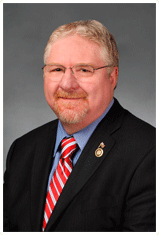Almost one year ago to the day, the Senate began debating Senate Bill 493, last year’s school accreditation and student transfer legislation. To say it was a huge undertaking is an understatement. The Senate, alone, spent an entire week debating the issue. The resulting piece of legislation, which was a true bipartisan effort, was ultimately vetoed by the governor. So here we are, a year later, back with a new measure (Senate Bill 1) to address the same education issues.
As you may recall, the student transfer crisis began during the summer of 2013, when a court decision came down that allowed students in unaccredited school districts to transfer to accredited districts. All of a sudden, thousands of students decided to transfer in the hopes of getting a better education, throwing numerous districts into chaos and creating a very difficult situation for students, teachers and schools alike.
The issues facing thousands of Missouri students and families are very real, and something will have to be done since the court’s ruling. A lot of time and effort has already gone into crafting SB 1, which genuinely contains some good ideas. The simple truth, however, is that the problems SB 1 is designed to address aren’t occurring in most of the state’s rural school districts, and the solutions actually have the potential of doing more harm to rural school districts than good.
There is a huge difference between the needs and characteristics of a rural school versus an urban school. Unfortunately, it often seems to be the case that the needs and issues affecting urban schools are a greater priority. A prime example of this is legislation that was passed last year, which provides funding for early childhood education in unaccredited or provisionally accredited school districts (many of which are in urban areas).
To pay for those programs, a change was made in the way school funds are distributed—a change that disproportionately affects rural school districts that do not have the large local tax bases urban school districts enjoy. Urban districts get more, while rural districts get less.
When did we get away from the idea of simply funding our education formula and allowing individual school boards to decide the best way to spend their money? Rather than fully funding the education formula, we continue to create more and more programs and initiatives that bleed the formula dry; initiatives that take away from many to give to a few; initiatives that may be good for urban school districts, but have nothing to do with their rural counterparts.
As legislators, it’s important we work to solve the localized issues of our constituents. After all, that is at the heart of why we’re here. That being said, it’s equally important to remember the big picture and that sometimes, less is actually more. Sometimes, the solution doesn’t come in the form of a large, sweeping education bill that pertains to a few, but affects many. When it comes to our state’s education system, one size does not fit all.
If you have any questions or comments about this or any other matter regarding your state government, please feel free to contact me at (573) 751-1503; you are also welcome to e-mail me at jay.wasson@senate.mo.gov. |



